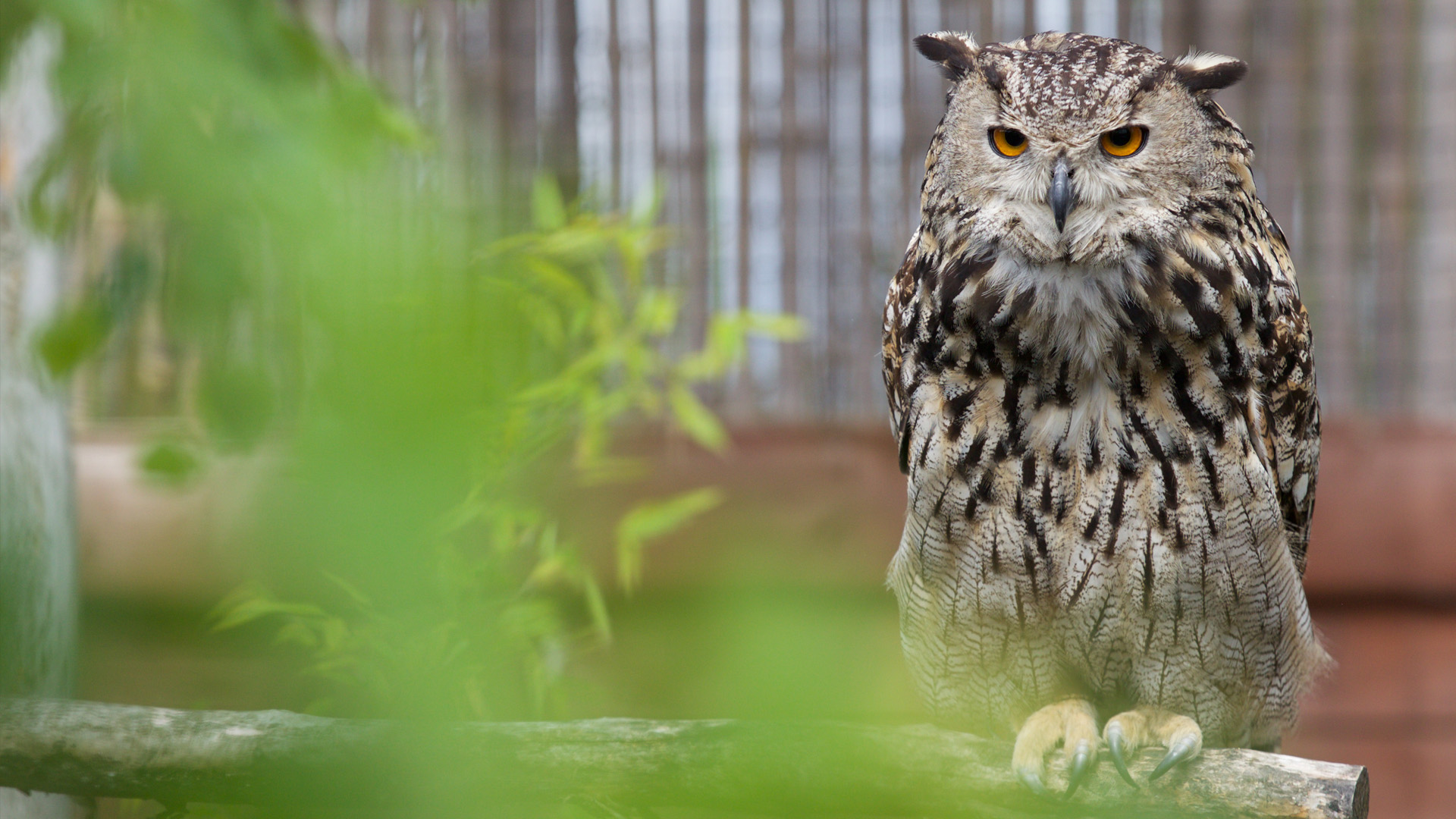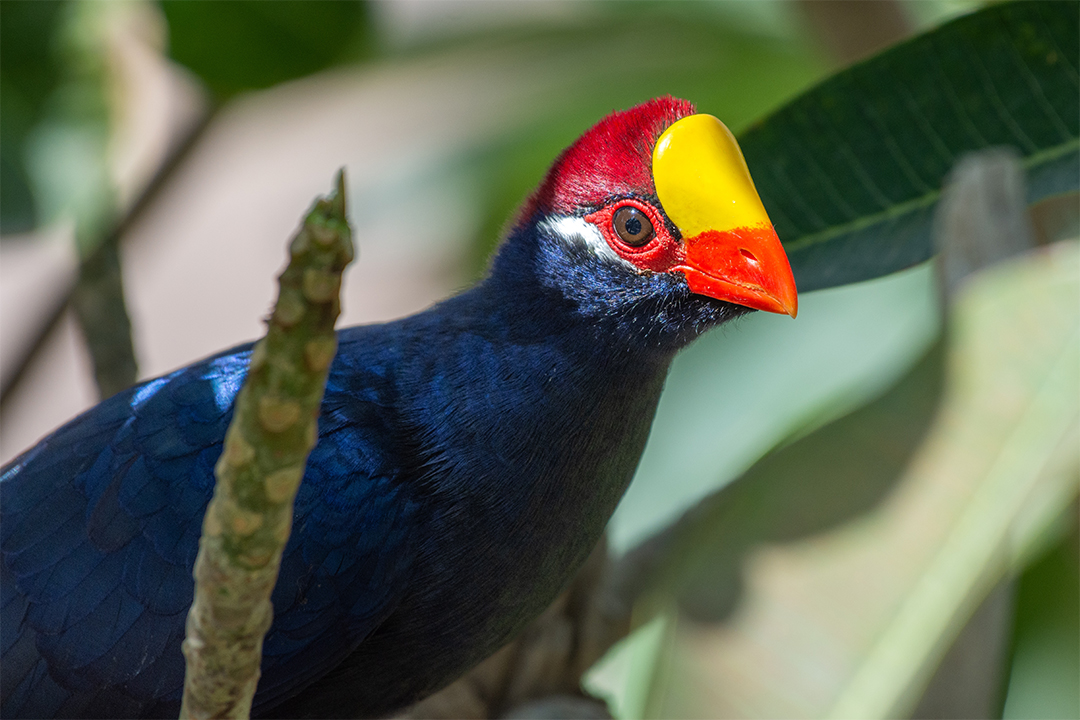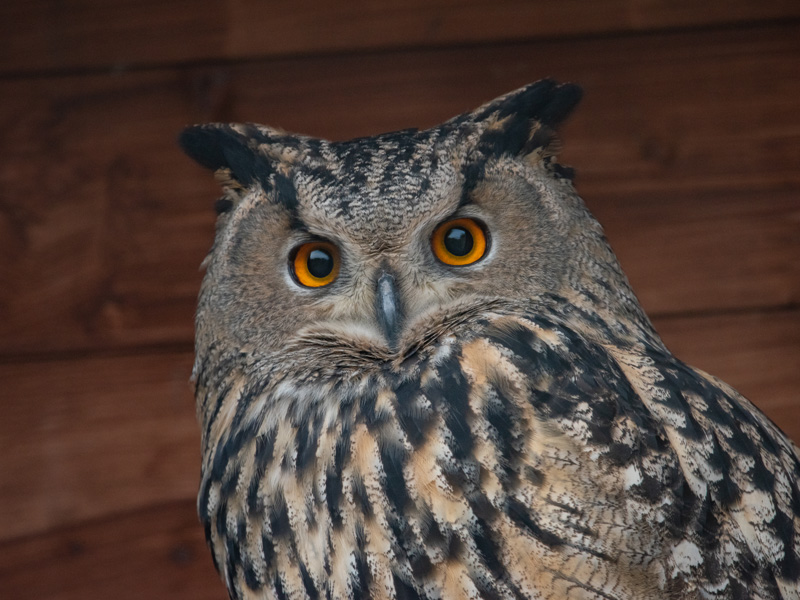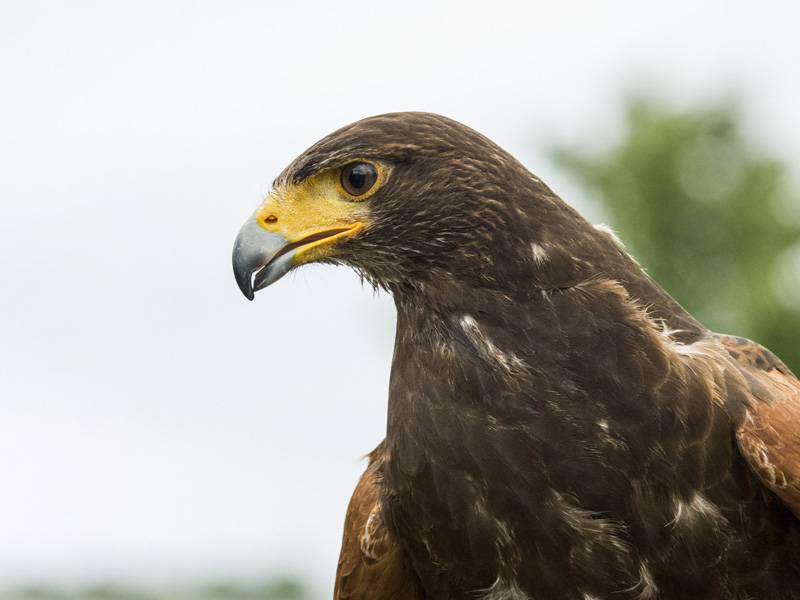Eurasian eagle owls have prominent ear-tufts, a large barrel-shaped body, large powerful feathered talons, and large orange eyes that do not move within their eye sockets. Their plumage is brown in colour and heavily streaked with black and their underside is much paler in colour with a distinctive a white throat. The typical “facial disk”, seen in most owls, is much less developed in the Eurasian eagle owl. They can move their heads 270 degrees left and right.
Eurasian eagle owls have a wingspan that can reach up to 2 meters. They are mainly solitary but will come together in the breeding season. They pair with the same mate each year.
Eurasian eagle owls are most active during dawn and dusk, when their prey species is most active.
Popular Searches

Eurasian eagle owl
-
Introduction
-
Conservation
Eurasian eagle owls are of least concern.
The International Union for Conservation of Nature (IUCN) has listed Eurasian eagle owls as Least concern.
It is thought that the overall population trend is in decline across the Eurasian eagle owl’s range.*
Illegal human persecution and the use of pesticides are the main threats to the Eurasian eagle owl as well as collisions with power lines, barbed wire, and vehicles.
*IUCN, 2017
-
Habitat
They are found in Europe, North Africa, Asia, and the Middle East. Although they are generally absent from Ireland and Britain, small numbers have begun breeding in Britain. They inhabit natural rocky areas with cliffs and ravines but can be found in semi-deserts, coniferous forests, and grasslands with suitable rocky areas.
-
Fun Facts
Eurasian eagle owls are predators that carry out an important role in the ecosystem.
They are monogamous. The frequency of breeding depends on the availability of resources.
Chicks remain dependant on their parents for up to 4 months.
They can turn their heads 270 degrees left and right, to get a better view of their surroundings.


















